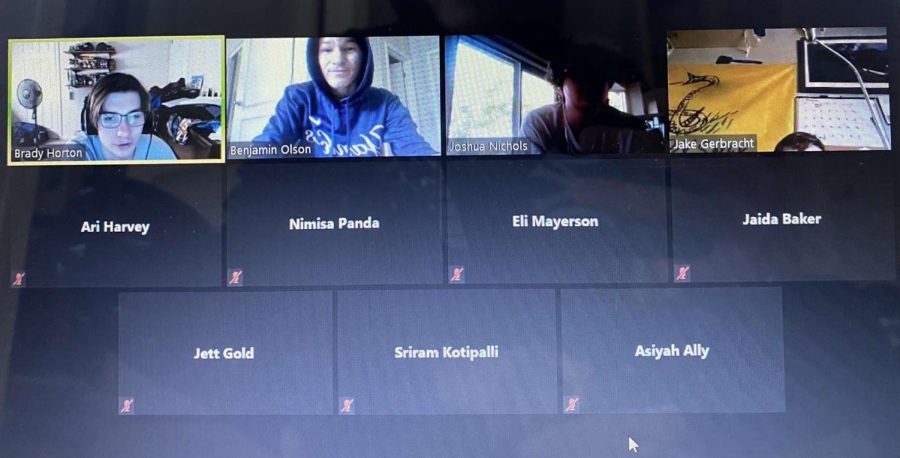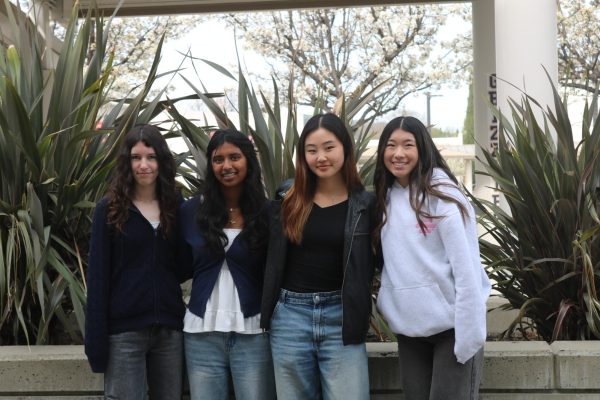Are breakout rooms really beneficial?
Teachers and students struggle to make this Zoom, Google Meet feature more engaging
Many students turn off their cameras while in Zoom breakout rooms, making it difficult for everyone to collaborate and communicate with classmates.
Sophomore Praneeta Agrawal sat in silence and stared awkwardly at the black boxes and muted mics on her screen. She took it upon herself to start the conversation by essentially asking, “Hey guys, what are we supposed to be doing?”
In return, the black boxes remained stagnant with no response whatsoever, so she was forced to do her group work individually.
Agrawal is not the only one facing this situation since schools have been forced online. The cause of this stems back to breakout rooms, which is a feature in online video conferencing platforms such as Zoom and Google Meet that allow people to break up into smaller groups.
Teachers are using this feature to allow students to communicate with each other in a smaller and more comfortable setting.
“I have observed that when the students have gone into their breakout rooms that’s where there would be more opportunity to have peer to peer communication,” English teacher Jennifer Beavers said.
Although teachers have envisioned breakout rooms to be an atmosphere like in-person school, that is not the case.
“Unless it is a really engaging group, nothing is going on,” sophomore Anh Nguyen said. “You are doing the work all by yourself, which is not what the intended purpose is.”
Like Nguyen, several other students are going through the same experience. It is difficult for students to feel comfortable and included in conversations when no one speaks. Other students have also said they do not want to speak up because they feel pressured by the lack of communication in their groups.
Although awkward situations have arisen several times in breakout rooms, they are still beneficial to the learning environment in some aspects.
“Breakout rooms help to not disturb the teacher,” junior Sanyukta Rohom said. “I also get to work with my classmates easier.”
A common problem that arises is starting the conversation. Teachers have been putting in their best effort to make the environment in breakout groups friendlier so people will be encouraged to talk.
“Usually if I start talking I see one of the students respond to me and that helps get the conversation flowing,” Yoga and Sports Conditioning teacher Vivian Hermosillo said. “Once a student takes control, the rest of the group starts opening up.”
Along with teachers, students have also said how being in a group with people they know makes it easier to start talking as well as get work done together instead of individually.
“I get put into a breakout room with my friends, so we just talk and get the work done,” senior Yuval Madne said.
A major component that both teachers and students think is necessary for them to be able to communicate in breakout sessions is to turn on webcams.
“It would be more comfortable if people’s cameras were on because then I wouldn’t feel like I am talking to a black screen,” Rohom said.
Several students agree with Rohom and said that talking to black screens seems counterproductive and unengaging.
“Because no one turns on their cameras, it becomes even harder to discuss questions or the work assigned,” Nguyen said.
Although Zoom is the platform the majority of the teachers use, some have been experimenting with Google Meet breakout rooms. There are a few reasons why teachers prefer Google Meet breakout rooms over Zoom.
“It allows me to pre-assign students to each room which causes less glitches,” Honors Precalculus and AP Calculus AB teacher Namita Vakil said.
The process for Zoom and Google Meet breakout rooms is different.
For Zoom, teachers manually assign students into groups or randomly assign them to a group, but they cannot observe what students are doing in their rooms at the same time.
A new Zoom feature allows students to join whatever room they want and jump from room to room.
On Google Meet, teachers can pre-assign students to breakout rooms ahead of class time. Students have to click on the separate meeting link to access their breakout rooms rather than just clicking a button. Vakil said she is also able to be in every breakout room and monitor all students while they are working.
Both platforms have provided a similar experience with the breakout rooms. Although at times it can be difficult to start conversations, teachers and students alike are trying their best to benefit from this feature.
“Overall, the idea of breakout rooms is definitely a good one,” Madne said. “It’s just a work-in-progress.”

Back again after a rigorous year as News Editor, senior Sami Tripasuri is excited to be co-Editor-in-Chief for The Californian. She enjoys writing and...












A Concerned Student • Nov 9, 2020 at 10:36 pm
You should reconsider whether it’s okay to put an image of students’ names and faces on a publicly available website. They might not be okay with the fact that you’ve displayed their names and or faces as the example image for unproductive zoom rooms.
Brian Barr • Nov 10, 2020 at 10:36 am
This photo was actually from one of the newspaper classes.